
Adding color is one of my favorite parts of the soapmaking process. Color in soap can convey different places, scents, themes or moods. If you prefer to keep your soap as natural as possible, there are a wide variety of colorant options. Various clays, herbs, botanicals and powders can give soap surprisingly vibrant hues. If you’d like to browse natural colorant options, click here for clays and here for herbs and botanicals.
To demonstrate various natural colorants in cold process soap, I uploaded this photo onto Instagram. I was so blown away by the response (!). Because of that excitement level on Instagram, I decided to do a more in-depth post about the process and usage rates. Check out the natural colorant tests below. Aren’t they gorgeous? In particular I adore the way that rose clay, purple Brazilian clay and green zeolite clay look in cold process soap. I love working with natural colorants and ingredients in cold process soap so much, I wrote a whole book about it! My new book, Pure Soap Making, is available for pre-order now and only uses natural and nature-identical colorants (like pigments and oxides).
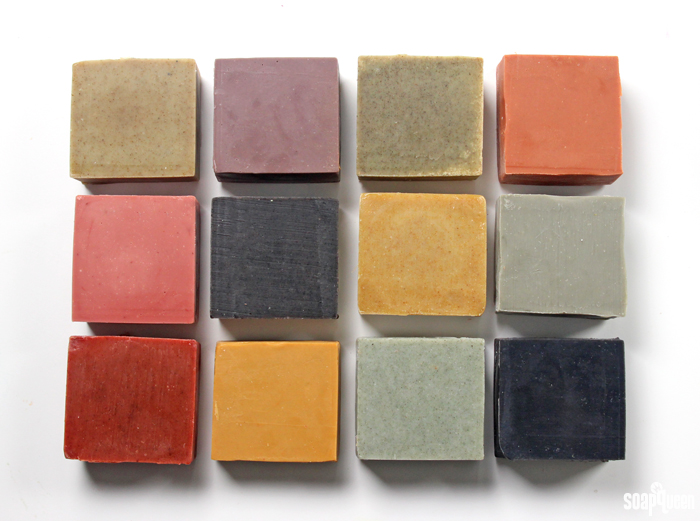 Top row, left to right: Olive Leaf Powder, Purple Brazilian Clay, Comfrey Leaf, Medium Red Brazilian Clay
Top row, left to right: Olive Leaf Powder, Purple Brazilian Clay, Comfrey Leaf, Medium Red Brazilian Clay
Middle row, left to right: Rose Clay, Alkanet Root Powder, Orange Peel Powder, Sea Clay
Bottom row, left to right: Madder Root Powder, Yellow Brazilian Clay, Green Zeolite Clay, Indigo Powder
To test the colorants shown above, I used a basic recipe of 33% canola oil, 33% coconut oil and 33% palm oil. I chose not to use olive oil in these experiments to help keep my batter as white as possible. This way, the colors would not be affected by a yellowish tinted soap batter. I used a 3% superfat and scented them with peppermint essential oil 1st distill, for a nice clean scent. If you’re curious, they were made in the 12 Cavity Square Silicone Mold. =)
For these soaps, I first dispersed 1 tsp. of each colorant into 1 Tbs. canola oil. This helps work out any clumps beforehand, and allows the colorants to blend in easier. Then, I split the soap into 4 ounce portions. I added all of the dispersed color to each container of soap and poured it into the mold. Once poured into the mold, I isolated with a blanket and set on a heating pad for 30 minutes on high. This helped ensure that each soap went through gel phase. Gel phase makes colors look more vibrant. This is especially true for natural colorants! If you’d like to learn more about gel phase and how it affects colors in cold process soap, check out this blog post.
A great example of heat and natural colorants is in the Lavender & Lemongrass Hot Process Soap. This hot process project uses spirulina powder and green zeolite clay and is topped with lavender buds. The additional heat during the cooking process helps the natural colorants really pop!
If you’d like to get soaping with natural colorants, check out the tutorials below! In the Pink Clay & Primrose Hand-Milled Soap, pink Brazilian clay adds a soft rosy hue. The soap is then topped with rose petals for a beautiful touch. Dried flowers are also added to the top of the Juicy Orange & Sweet Rose Cold Process and the Marbled Clay Hot Process Soap. In the Natural Colorant Taiwan Swirl a combination of colorants including indigo powder and dark red Brazilian clay create gorgeous color contrast.
 Top left, clockwise: Natural Colorant Taiwan Swirl, Marbled Clay Hot Process Soap, Pink Clay & Primrose Hand-Milled Soap, Juicy Orange & Sweet Rose Cold Process
Top left, clockwise: Natural Colorant Taiwan Swirl, Marbled Clay Hot Process Soap, Pink Clay & Primrose Hand-Milled Soap, Juicy Orange & Sweet Rose Cold Process
Natural colorants aren’t just for cold process soap. If you’re looking to make other bath and body products, natural colorants are a great option. In the Lavender & Clay Mondo Bath Fizzy, pink and purple Brazilian clays are used to create layers within the bath fizzy. The Minty Clay Melt and Pour Bars use a combination of green zeolite clay and spirulina powder for a wonderful green hue. Natural colorants can also be used in scrubs, as shown in the Sea Clay Dry Salt Scrub tutorial.
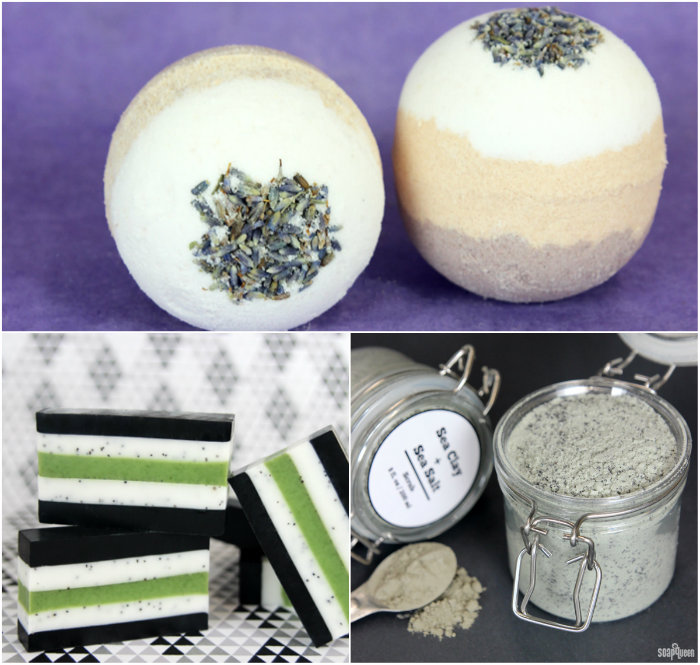 Top, clockwise: Lavender & Clay Mondo Bath Fizzy, Sea Clay Dry Salt Scrub, Minty Clay Melt and Pour Bars
Top, clockwise: Lavender & Clay Mondo Bath Fizzy, Sea Clay Dry Salt Scrub, Minty Clay Melt and Pour Bars
What’s your favorite ways to use natural colorants? Below are more blog posts with tips and tricks for using clays and other natural colorants in your projects!
Sunday Night Spotlight: Natural Colorants
Natural vs. Organic
Talk it Out Tuesday: Colorants
Make it Monday: #Natural Colorants
#Natural Colorants Winners!
Guest Post: Testing Natural Colorants in Cold Process
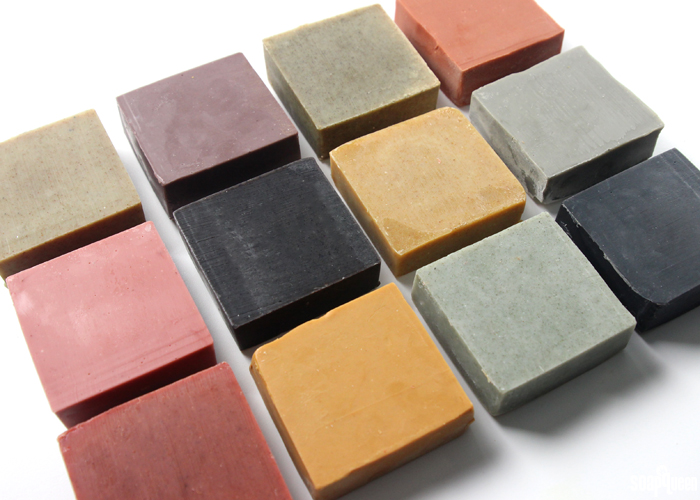



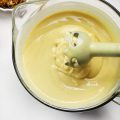
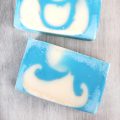
to the soap queen! i absolutely love this post!! i just read it today. i was very interested that you wrote a book and wanted to purchase it, once i clicked on the link to see what book it was that i had the BIGGEST smile on my face because i just bought this book last night! can’t wait to get it in the mail!
Thanks so much for your order! 🙂
-Kelsey with Bramble Berry
Live Your Best Day Ever: https://www.brambleberry.com/Live-Your-Best-Day-Ever-Thirty-Five-Strategies-For-Daily-Success-P6761.aspx
Great post! I have goats and have been making goat milk soap without any colorants but I would like to add some color without using artificial dyes. How well does the color of these come through when used in goat milk soap?
Because goat milk soap tends to have a more yellowish tint, the colors overall will be a bit more yellow. Because you want to keep milk soap cool and avoid gelling, the colors may be a bit more pastel too. They will still look lovely though. You may want to prepare some extra of each colorant just in case you need to add more.
-Kelsey with Bramble Berry
Thanks for all the helpful ideas, I can make my soap base, but I am trying to learn how to add fragrance and color. I don`t want to sell my soap I just like to know how to make soap, my grandmother, and my mother made soap, it seemed so simple for them. My Brother,is a hunter, he loves my plain soap, he some times gets turkey mites or white oak mites, and my soap is the only thing that takes care of that problem.
That’s awesome, glad your family is enjoying your handmade soap. I can definitely help you add color and fragrance. What would you like to add to your base?
-Kelsey with Bramble Berry
I am new to soap making and am beginning with hand milled rustic soaps and a few melt and pour for fun. Will these colorant powders work well for me . I’d love some deep rich colors like these.
They will! Natural colorants work for melt and pour and rebatch soap. We used clay in the Pink Clay and Primrose Hand-Milled Soap: https://www.soapqueen.com/bath-and-body-tutorials/cold-process-soap/pink-clay-primrose-hand-milled-soap/
And we used clay, spirulina and charcoal in this melt and pour tutorial: https://www.soapqueen.com/bath-and-body-tutorials/melt-and-pour-soap/minty-clay-melt-pour-bar/
Learn more about using natural colors in soap here: http://www.soapqueen.com/bath-and-body-tutorials/tips-and-tricks/talk-it-out-tuesday-colorants/
-Kelsey with Bramble Berry
Good to know about colorants. We use oxide powders for our soaps, but they are quite pricey. Is there a cheaper alternative?
You may like LabColors! They’re super concentrated dyes that you dilute with water at home. Because they’re diluted, you get a lot of color for your soap! 🙂
Read more about using LabColors here: http://www.soapqueen.com/bath-and-body-tutorials/tips-and-tricks/diluting-bramble-berry-labcolors/
LabColors: https://www.brambleberry.com/LabColors-C172.aspx
-Kelsey with Bramble Berry
I want to begin using clays so that I can offer a more natural line of soap to my clients. Does using clay mean that the soap will be drier and that one has to compensate for that by using certain oils over others when soaping with clay?
Hi Carolyn!
Because clays naturally absorb moisture, they work really well for oily skin. If your clients have drier skin, the bars may be a bit drier. To compensate for that, you can bump up the superfat level slightly! You can also add moisturizing oils like avocado, sweet almond and olive oil. Read more about common soapmaking oils and how to use them in your soap here: http://www.soapqueen.com/bath-and-body-tutorials/tips-and-tricks/free-beginners-guide-to-soapmaking-common-soapmaking-oils/
And more about superfat here: http://www.soapqueen.com/bath-and-body-tutorials/cold-process-soap/superfatting-soap-an-explanation-2/
I would recommend making some small test batches with the clays and different oils to see which combination works for you. 🙂
-Kelsey with Bramble Berry
Hi,
I have been so inspired by your web page and the way ‘Soap Queen’ manages to run a successful business while still being so honest and supportive of others. It’s nothing short of amazing ..
My question has to do with how natural colorants look over time. I’m wanting to use natural materials to create a shade of green but a top concern of mine is that is stand the test of time (a few years minimum). People seem really positive about the materials but is it safe to assume they are using the bars quickly because I read a few accounts of people who can’t achieve long lasting color (specifically green) with natural ingredients. I know light is a factor but can you tell me from your experience if any of the natural materials gave you long lasting color?
Thank you so much
Hi Stefanie!
With natural colorants, most will fade over time. To prevent that from happening too quickly, we recommend storing them in a cool, dry place out of direct sunlight.
We have used several natural greens, including spirulina and French green clay. The French green clay tends to last a bit longer! It is more of a soft minty green. It looks really pretty in soap. 🙂
French green clay: https://www.brambleberry.com/French-Green-Clay-P6444.aspx
We used a combination of French green clay and spirulina powder in the Avocado + Spearmint Cold Process Soap for a lovely green shade: http://www.soapqueen.com/bath-and-body-tutorials/avocado-spearmint-cold-process-soap-tutorial/
-Kelsey with Bramble Berry
gorgeous, that’s one of my favorites… I just saw this today, thank you!
You’re welcome! 🙂
-Kelsey with Bramble Berry
will natural clay coloring change the consistency and or feel of the soap
Hi Marline!
Certain natural colorants can change the feel of the soap. For instance, paprika has larger grains, and can add a slightly gritty/exfoliating feel to the bars. Clays can also affect the texture. Because they naturally absorb moisture, they can make the bars a bit harder.
Are you wanting to make a harder bar, or one that has a bit of exfoliation? Or, do you prefer softer bars? Let me know and I can offer some natural colorant options. 🙂
-Kelsey with Bramble Berry
Also, were these all added at the time of soap making right? Added at trace/before pour? (not infused oil before hand?) Alkanet infused fixed oil makes a purple right?
P.S. Your Brazilian clays look AMAZING. I have some at home and I can’t wait to try them!
That is correct! These powder colors were mixed with oil and added at trace. None of them were infused beforehand.
Also, infused alkanet root does have a nice purpley color! You can see that color here: http://www.soapqueen.com/bath-and-body-tutorials/cold-process-soap/swirling-alkanet-infusion/
And learn more about infusing here: http://www.soapqueen.com/bath-and-body-tutorials/tips-and-tricks/how-to-infuse-oils-with-a-crock-pot/
Have fun giving the Brazilian clays a try! They create really beautiful colors. 🙂
-Kelsey with Bramble Berry
So for clarification, the usage rate to get these tones is 4 tsp PPO? (1 tsp per 4 oz oils?)
Plus force gel phase.
Hi Rebecca!
The amount is all of the dispersed color (1 tsp. color into 1 Tbsp. of oil) into 4 ounces of soap, which includes oil, liquid and lye. Then, they went through gel phase. So, per pound of soap, it would be about 4ish tablespoons (maybe a bit more). Hope that helps! 🙂
-Kelsey with Bramble Berry
Hi Kelsey (:
I was wondering about the usage rate as well.
You said 4ish tablespoons in your response to Rebecca… Did you mean teaspoons?
Thanks!
If you were making a pound of soap, it will end up being about 4 tablespoons! You’ll want to prep 4 teaspoons of color into 4 tablespoons of oil for a larger batch of soap. Then, you can add that at 1 dispersed tablespoon at a time until you get a color you like. If you added all the color to the 1 pound batch, it would be about 4 tablespoons. 🙂
-Kelsey with Bramble Berry
Oooh, okay. I thought you meant four tablespoons of colorant–I didn’t realize you meant 4 teaspoons of colorant + 4 tablespoons oil. Thanks for clearing that up! (:
You’re welcome!
Just made a soap using BB clays and herbs. Turned out great. I wasn’t sure about the indigo powder( the last time I used it I ended up with army green) so I used frozen coconut milk as my liquid. All the clays were nice but the indigo blue was a lovely shade of powder blue. Really like it.
That’s awesome Laura, so glad that soap turned out well! I love the idea of using it with milk for a powder blue color, thanks for the tip. Also, thanks for your order. We really appreciate it. 🙂
-Kelsey with Bramble Berry
Love this post! Thank you so much!! I always question if I’m using too much or too little colorant. But I get so much satisfaction using natural colorants and herbs from our garden. I would have never thought to heat my soap with a heat pad to make the colors more vibrant. What a great tip! As always, soapqueen… You never disappoint.
You’re welcome Andrea, so glad you love it! Natural colors definitely love gel phase, it makes them more vibrant. Have fun experimenting with natural colorants in your recipes. 🙂
-Kelsey with Bramble Berry